Telephony in Centralia
Centralia was one of the first of the smaller towns of Missouri to have an electrical telephone system.
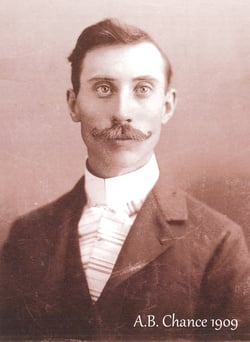 In 1887 or '88 a company headed by a party named Lander, constructed a toll line connecting Centralia and some of the towns to the west and south. This caused A. B. Chance to take up the study of the telephone and other similar apparatus and equipment. John W. Wills and Mr. Chance each obtained a wooden telephone receiver from L. Haley, who was at that time a student in the Missouri University, and he had made these instruments while doing his laboratory work in the engineering department of the school. These receivers were not so very efficient, but they would operate sufficiently to transmit and receive voice vibrations which were audible over short metallic lines.
In 1887 or '88 a company headed by a party named Lander, constructed a toll line connecting Centralia and some of the towns to the west and south. This caused A. B. Chance to take up the study of the telephone and other similar apparatus and equipment. John W. Wills and Mr. Chance each obtained a wooden telephone receiver from L. Haley, who was at that time a student in the Missouri University, and he had made these instruments while doing his laboratory work in the engineering department of the school. These receivers were not so very efficient, but they would operate sufficiently to transmit and receive voice vibrations which were audible over short metallic lines.
These boys saved up their pennies and bought some fencing wire from John's father who was engaged in the hardware business, and they obtained some oak poles and erected the first electrical telephone line constructed in the town. John Wills lived on the corner diagonally across from the Methodist church, known today as the Noel corner. Bishop Chance lived in a residence on Singleton Street just north of the present residence of H. E. Stone. The house is now occupied by W. M. Duren and family.
Possibly this telephone line was not a thing of beauty, nor evidenced much skill, as judged by present day line construction, but it sufficed to encourage desire and ambition for these boys to know more of the art of telephony, and from that date, in addition to the use of endeavor to obtain knowledge concerning a more practical use and design of the equipment.
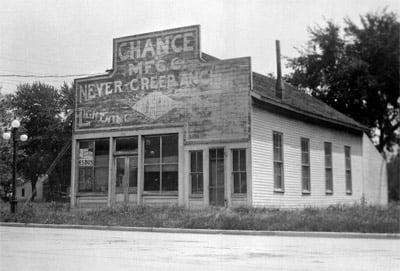
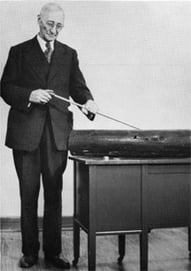
The boys obtained telegraph sounders and instruments and connected them with the line, using these instruments as means for signaling, while the telephone receivers were put in operation with a switch arrangement. Signals were then given with the wooden phone over the line in Morse code.
ln those days it was never dreamed that the telephone would ever be anything greater than a toy, and while the instruments and equipment of these two boys were objects of great curiosity to those never having seen anything in the form of a telephone, aside from the old drum or tin can type that was operated by stretching a line taut between two small drums, therefore there was not any great amount of encouragement for investigation or promotion for telephone service, but to these boys the apparatus was so interesting and absorbing it furnished many hours of pleasure, and they learned much from their experimenting.
At that time all patents on telephones were owned and controlled by the Bell Telephone Company, and no equipment was sold, while the company would lease instruments for a period of time.
The telephone was invented in 1876 and while twelve years had elapsed between the time of invention and the installation of the first telephone in Centralia, no great advancement, so far in establishing general telephone service, had been made. During the succeeding five years, manufacturers started up over the country making parts of telephone equipment, but they did not assemble them because of liability of infringement.
About this time A. B. Chance started making and buying parts and assembling telephones. He had to invent and make quite a number of parts which could not be purchased. The cabinets were made for him by the carpenters of Centralia as they were required.
The first commercial telephone line was erected between R. L. Hope's drug store and Jonas Berg's poultry house and to the J. A. Chance home. Later the line was extended to the Berg residence. All of the telephones were on the same line.
Increased demand caused this enterprise to build a five-drop switch-board on an enunciator and subscribers were connected as rapidly as they were secured on this five-drop switchboard. ln a few months this board was filled. It was installed in Berg's poultry house. It was found necessary to enlarge the switch-board capacity and Mr. Chance built a hoard with seventeen drops, feeling this would take care of the town for a long time, but to his surprise the board was soon overloaded and it was found necessary to construct a seventy-line board which was placed in the upstairs room of the new brick Berg building· on North Allen street. Miss Sallie Chance, now Mrs. W. T. Fountain, was the first telephone central operator in Centralia, serving in that capacity for years.
As the business continued to grow by leaps and bounds, J. A. Chance, father of the founder, became interested in the business and they constructed a 200-line board and moved the central to the upstairs room in the Joe Woods building, now the O. G. Wilson drug store. In a few years the equipment was increased and several operators were added to the central. At one time there were over 800 telephones connected with the central and the repair shop had to be moved out to make room for the switch-boards. After the fire, which destroyed W. O. Baker's drug store in the lower rooms of the Woods building, the central was moved to the upper rooms of the building just across the alley west of the Guard office. About this time underground conduits were placed over the business sections and the overhead wires removed.
- E. Turner came to this city and purchased the local telephone system of the company and later sold it to the Missouri Telephone Company with offices in Columbia. This company purchased the building in which the central is located from the state finance commissioner in charge of liquidating the Farmers & Merchants Bank.
- B. Edmondson is the local manager of the local exchange.
HOW THE CHANCE FACTORY WAS BORN
Out of his enforced experience in making telephone receivers, A. B. Chance was impelled to enter into the manufacture of appliances for telephone lines, the first of which was the "Sky-Rocket" lightning arrester, which involved the choke-coil principle.
The repair shop had been moved to the old frame Christian church building, which was moved off of its former site to the lot across the alley to the west, and facing the city park.
In this building Mr. Chance installed machinery and a tool shop where he assembled telephones, made his lightning arresters of different types and sold electric lighting fixtures and other equipment.
When the big sleet storm of 1912 pulled down so many of the telephone lines and poles, Mr. Chance found that the repairs as made in that day were liable to swamp the finances of the company. It was necessary to dig a deep pit in the frozen ground, put in a log of wood called a "dead-man", with an eye-rod to which the pole could be guyed. This was common practice in that day, but with so many poles down it would require weeks to dig these pits.
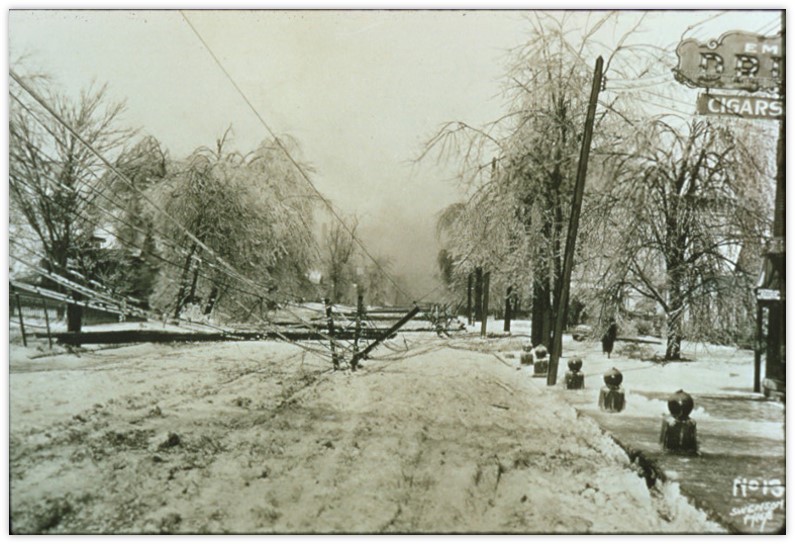
Mr. Chance conceived the idea of having a slanting hole dug with a large sized fence auger, the hole being about 45 degrees off perpendicular. He bored a hole in a log of wood, shoved the log into the hole into the ground, then drove a wooden rod with a piece of sharp brass on the point so that it would strike the hole in the log. An iron rod with threads on the lower end and an eye in the top was inserted into this hole, thru the hole in the log and a large iron washer and tap was run upon the threads. This made a better anchor than the "dead man" because it pulled against undisturbed earth and could be installed in less time. This was the ancestor of the Chance anchor, which is made of cast steel and is today used in every country on the globe.
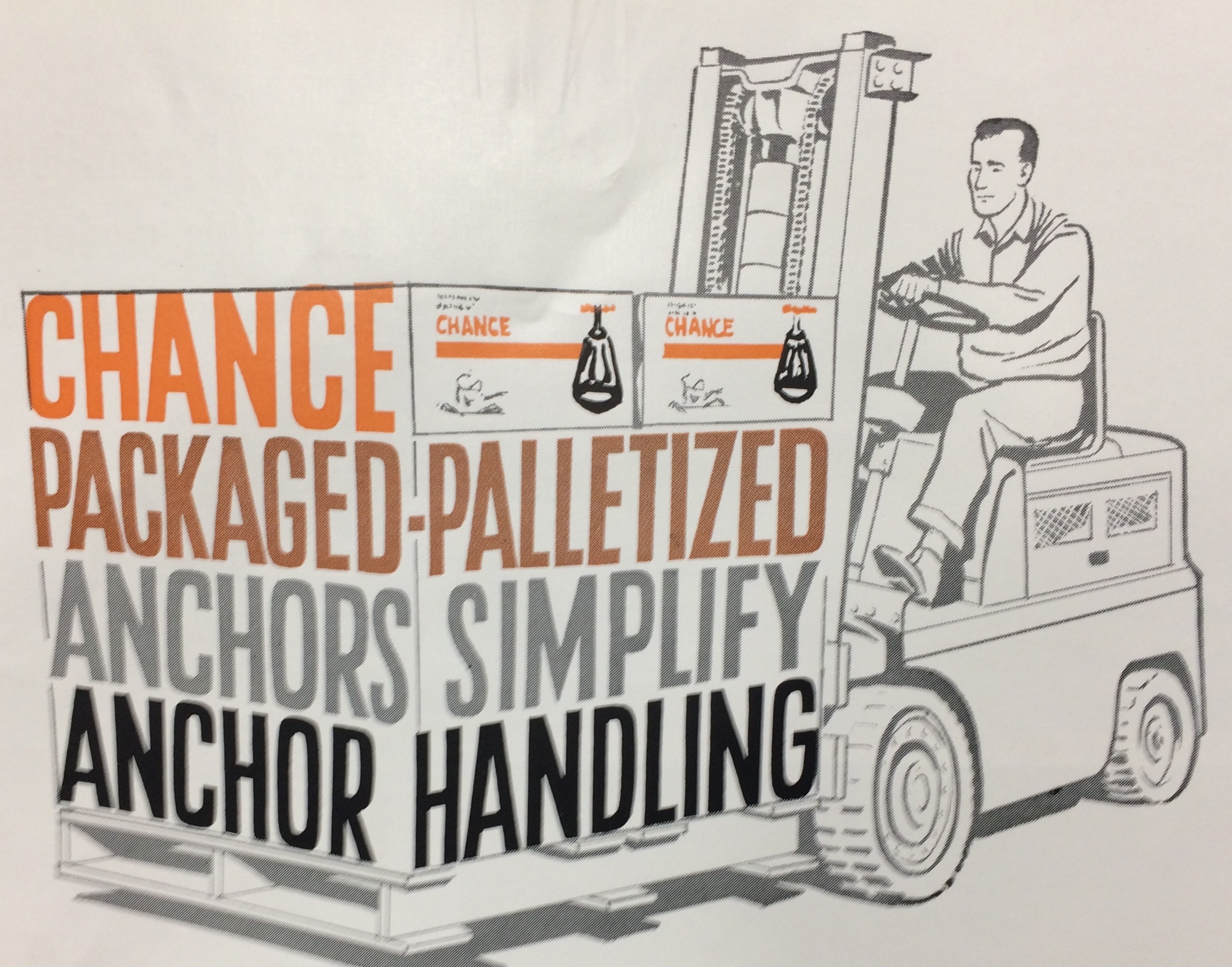
From the manufacture of anchors the factory went into other pole line contrivances. An iron foundry was installed, and the factory moved to the city land between the railroads, which was leased for that purpose. Late machinery was installed for making piston rings for motor car engines, pulleys, plow points and other appliances for various purposes. The plant has a galvanizing department, punch presses, die-stamping machines, milling machines, malleable iron foundry and many departments for making, finishing, and packing appliances of various kinds. A large sales force is maintained on the road and articles of Chance manufacture are sold in possibly every civilized country.
When working at its full capacity this plant can give employment to 300 or more persons, while many of the articles made here are recognized as standard everywhere.
The plant covers the major portion of the space between the two main lines of railroad from Collier to Barr Street. The office and main building of the factory and Warehouse No. 3 front on North Allen Street.
From the book History of Centralia, Missouri written in 1936 by Edgar T. Rodemyre and published by the Centralia Historical Society.
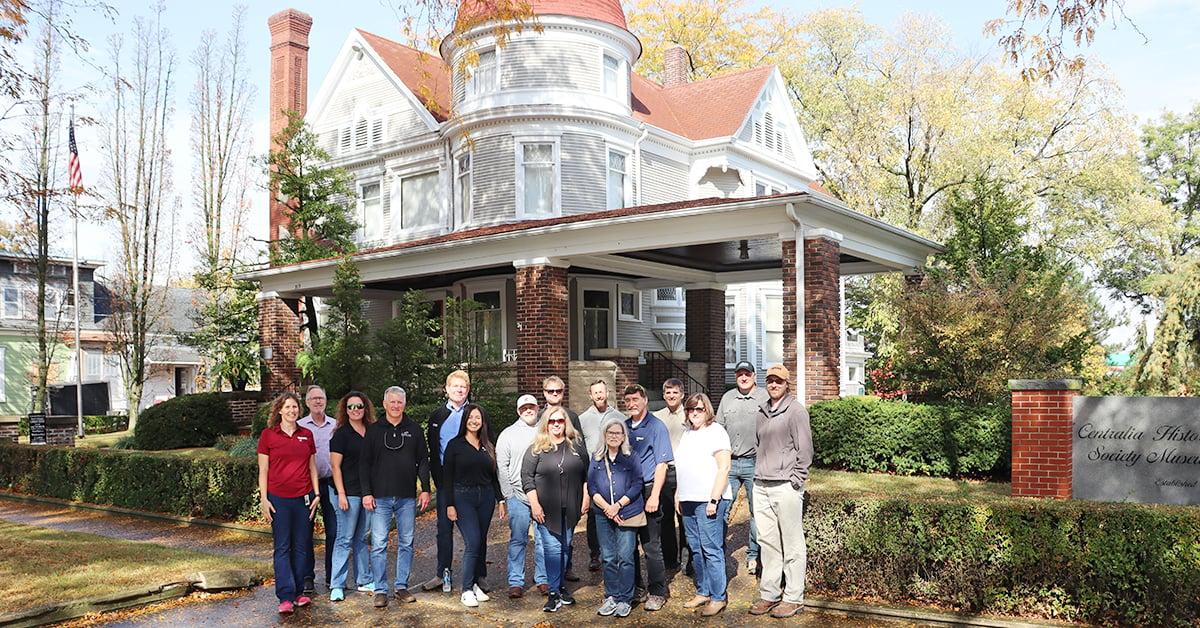
 In 1887 or '88 a company headed by a party named Lander, constructed a toll line connecting Centralia and some of the towns to the west and south. This caused A. B. Chance to take up the study of the telephone and other similar apparatus and equipment. John W. Wills and Mr. Chance each obtained a wooden telephone receiver from L. Haley, who was at that time a student in the Missouri University, and he had made these instruments while doing his laboratory work in the engineering department of the school. These receivers were not so very efficient, but they would operate sufficiently to transmit and receive voice vibrations which were audible over short metallic lines.
In 1887 or '88 a company headed by a party named Lander, constructed a toll line connecting Centralia and some of the towns to the west and south. This caused A. B. Chance to take up the study of the telephone and other similar apparatus and equipment. John W. Wills and Mr. Chance each obtained a wooden telephone receiver from L. Haley, who was at that time a student in the Missouri University, and he had made these instruments while doing his laboratory work in the engineering department of the school. These receivers were not so very efficient, but they would operate sufficiently to transmit and receive voice vibrations which were audible over short metallic lines.





